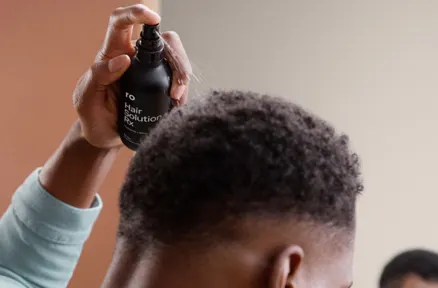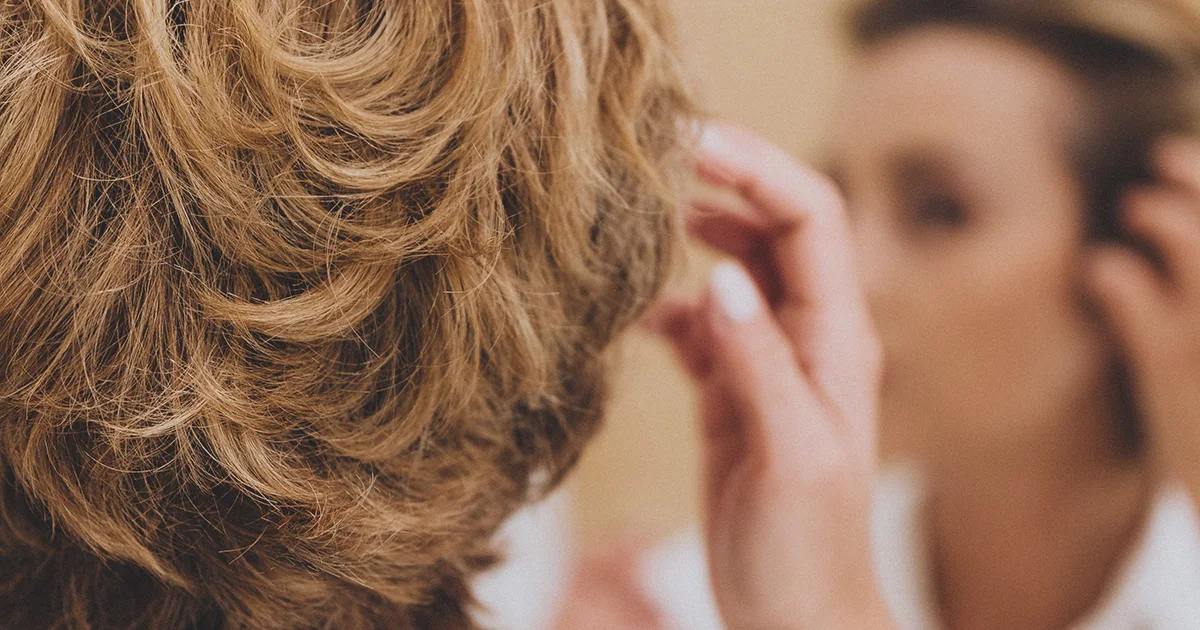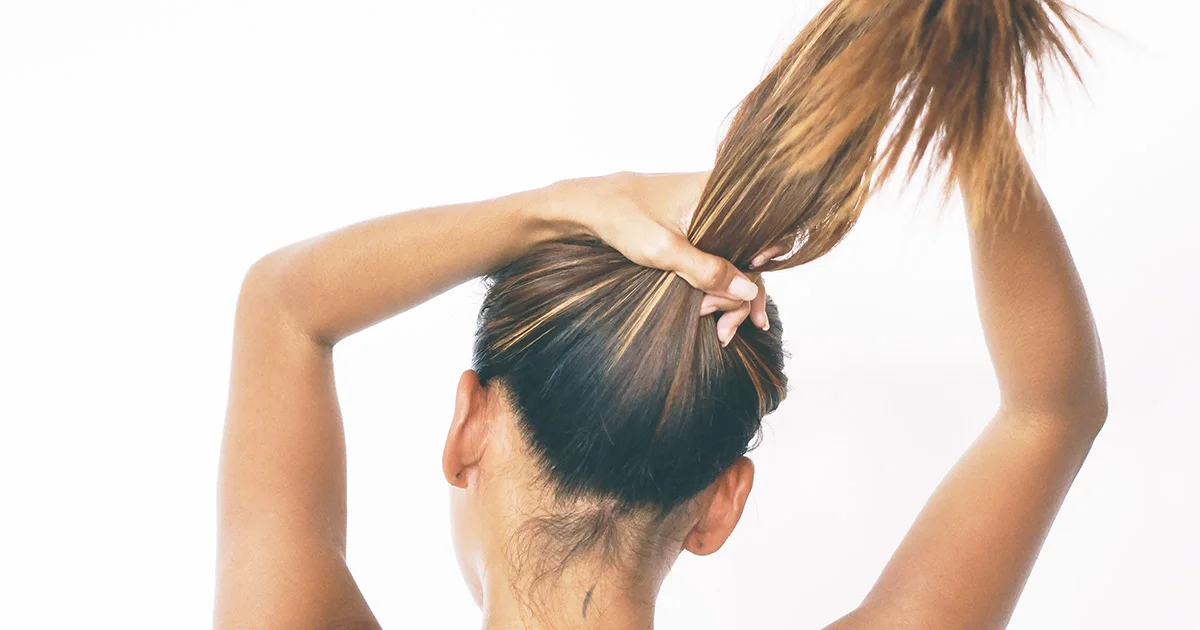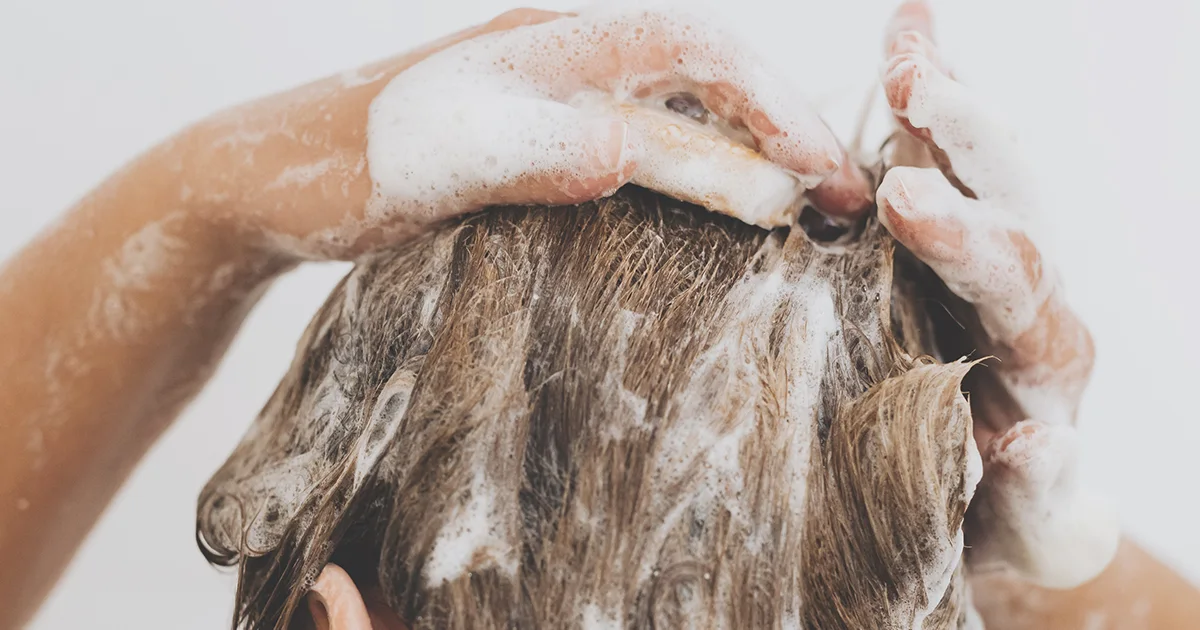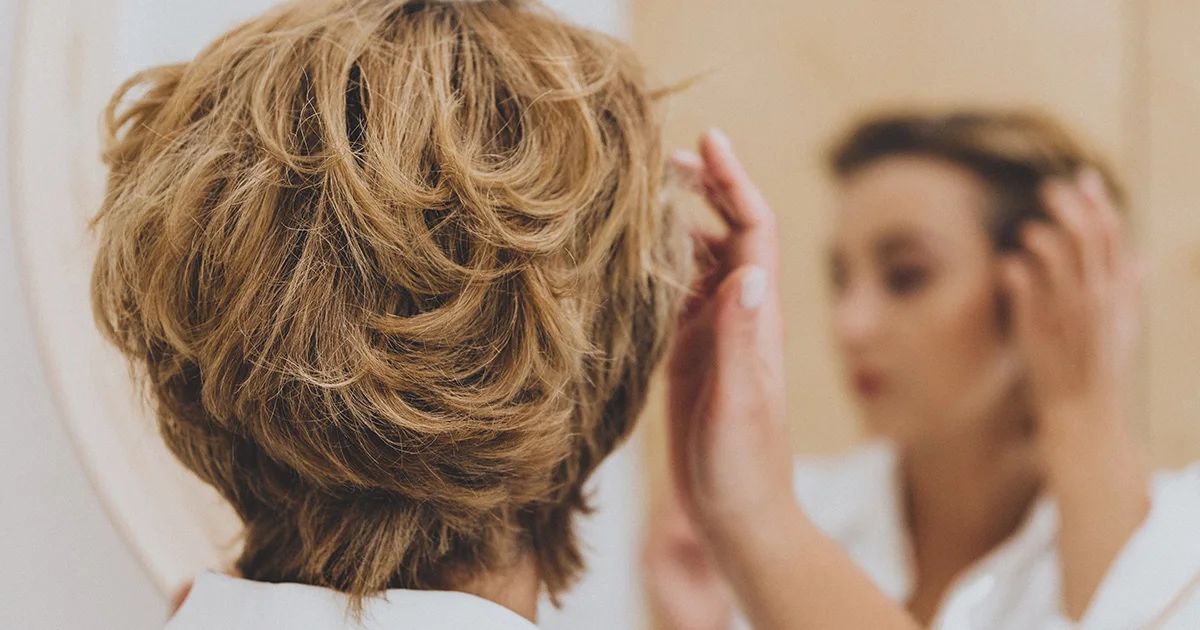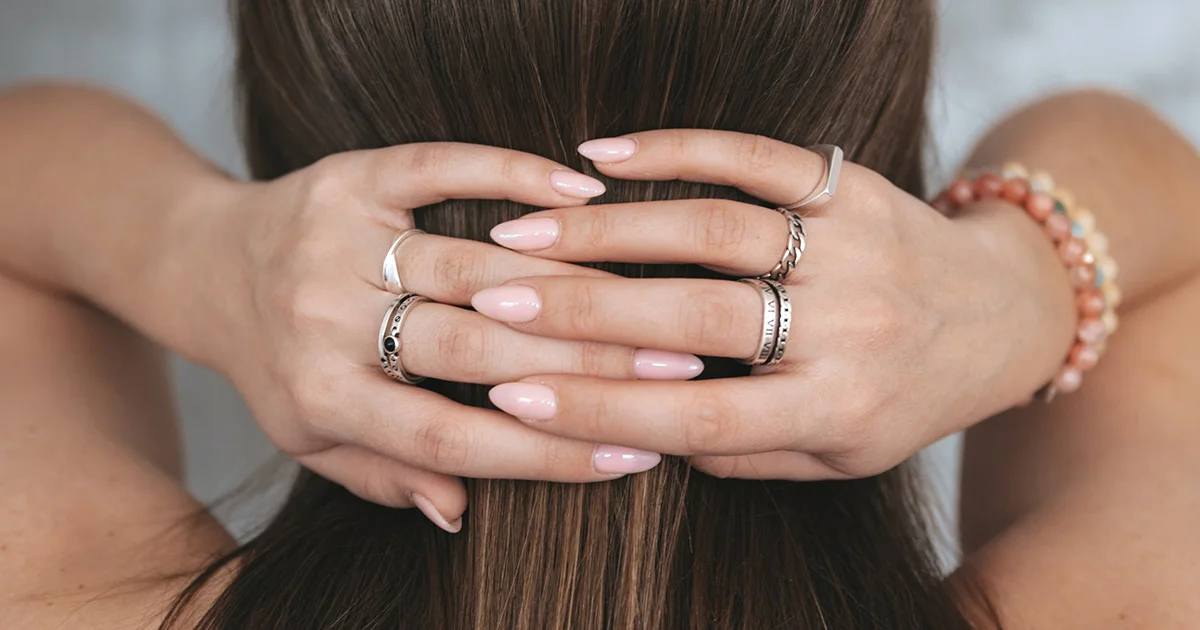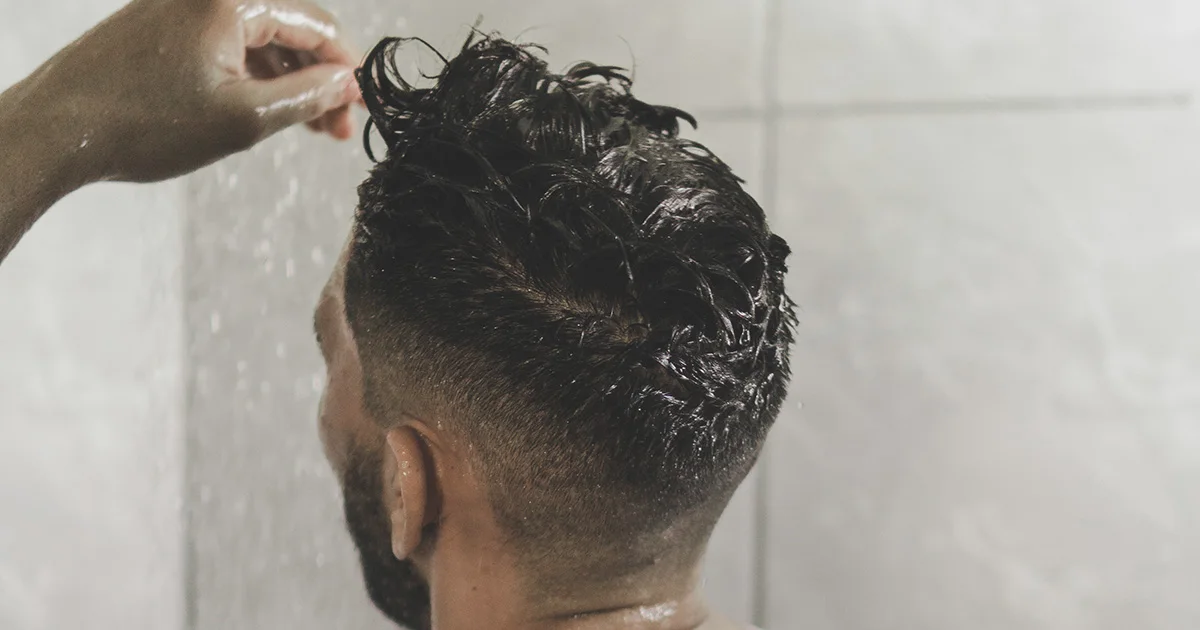Key takeaways
In general, hair grows about 1/2 inch per month or 6 inches per year.
How long it takes for hair to grow back varies across individuals and depends on factors such as genetics, age, overall health, and more.
If you’ve experienced hair loss or shedding, the rate of hair regrowth (and growth overall) can also be affected by the cause(s) behind the hair loss.
Here's what we'll cover
Here's what we'll cover
Here's what we'll cover
Key takeaways
In general, hair grows about 1/2 inch per month or 6 inches per year.
How long it takes for hair to grow back varies across individuals and depends on factors such as genetics, age, overall health, and more.
If you’ve experienced hair loss or shedding, the rate of hair regrowth (and growth overall) can also be affected by the cause(s) behind the hair loss.
As much as you might like to control every aspect of your life (hey, we do!), some things just aren’t as easily, well, controlled. One such example? How long it takes for hair to grow back.
While the rate at which your strands grow—or don’t grow, for that matter (think: hair loss)—can be influenced by factors such as diet and genetics, there’s little you can do to directly speed up the process. And before you even consider taking matters into your own hands, it’s important you first understand the hair growth cycle in general.
So, how long does it take for hair to grow back, exactly? Keep reading to learn more about how fast hair grows, including the factors that can affect hair growth, as well as ways to potentially increase your strands’ growth rate.
How long does it take for hair to grow back?
Your hair is always growing. So how fast does hair grow? Hair grows 0.35 mm per day. That equates to hair growth of about 1 cm (~1/2 inch) per month or 15 cm per (~6 inches) per year. Keep in mind, though, that the time it takes for hair to grow back varies person-to-person and depends on aspects such as genetics, age, nutrition, overall health, and more. If there is a particular reason for hair loss, the underlying cause can also impact how fast your strands grow back. But we’ll dig deeper into this later. First, it’s important to know the basics of hair growth…
Phases of hair growth
Most people typically have 80,000–12,000 hairs all over their scalp. But you’re also losing hair constantly—to the tune of about 100–200 per day. You might notice these stray strands on your brush, pillow, or in the shower after washing your hair.
Don’t worry; some degree of hair loss is normal because your hair follicles are cycling through four phases of hair growth:
Anagen (growth) phase: During this stage, which lasts 2–6 years, your hair is actively growing. Up to 90% of hair follicles on your scalp are in the anagen phase.
Catagen (transition) phase: Lasting only a few weeks, this is when your hair follicles start to shrink, your hair gradually stops growing, and a bulb-like structure forms at the end of the strand. The final product is a club hair, a normal, fully formed strand that’s done growing.
Telogen (resting) phase: At this point, your hair follicle goes on an extended vacation, if you will. Over the course of about 3 months, your hair follicle is dormant and no growth occurs. About 10–15% of the follicles on your scalp are in this phase.
Exogen (shedding) phase: Finally, this is when the hair falls out of the follicle.
Individual hair follicles operate independently, meaning one could be in the anagen phase while another is taking a respite in the telogen phase. Over the course of your life, each follicle can go through the above cycle about 10–30 times. The exact number, though, can depend on several variables, which brings us to…

Factors that can affect hair growth
The hair on your head can be a window into your overall health. As mentioned above, hair growth—including how long it takes for hair to grow back—can be affected by numerous factors, such as medical conditions, hormonal changes, stress (both “good” and “bad”), nutrition, and the natural aging process. Here’s a deeper look into each:
Medical conditions
Numerous medical illnesses can contribute to hair loss, including thyroid conditions (both an underactive and overactive thyroid), anemia, lupus, and type 2 diabetes. If you experience hair loss, speak to a healthcare provider who can run testing, if needed, to determine whether there’s an underlying medical condition at play and, if so, to address it accordingly.
Autoimmune conditions, such as alopecia areata, can also directly cause hair loss. In this disease, the immune system mistakenly attacks the hair follicles. It affects 2% of the population, and genetics, as well as environmental factors (e.g. viral infections) can play a role in its development.
Hormone fluctuations
Changes in hormones can affect your hair, and you may notice more thinning, less volume, and a change in texture. Take, for example, androgenic alopecia (aka male pattern baldness), which is linked to an increase in dihydrotestosterone (DHT), a form of testosterone. Boosted levels of DHT (as well as other androgens, or male sex hormones) are believed to shorten the hair follicle’s life cycle, thereby producing thinner, shorter hair. Overtime, some follicles slow down and stop making hair altogether.
In females, hormone fluctuations during menopause can be particularly influential in hair growth (or lack thereof). The likely culprit is a decrease in estrogen, though less blood flow to hair follicles and an increase in the conversion of testosterone to DHT during this time may also lead to hair loss.
Stress and trauma
Another factor that can affect hair growth is stress, both psychological (e.g. anxiety, emotional trauma) and physiological (e.g. pregnancy, extreme weight loss, illness). The most common type of stress-related hair loss is telogen effluvium (TE), which—some good news—is temporary.
During TE, hairs in the anagen (growing) phase suddenly shift into the telogen (resting) phase for about 3 months. At this time, you won’t know that some of your hair has essentially gone to sleep. But after some time passes, the follicles push out the old strands. The result: A lot of shedding at once. If you’re not sure why you’re losing your hair rather suddenly, think back to a few months to see if you can pinpoint a particular stressful event.
Nutrient deficiencies
Blood flow in your scalp is important for hair growth because circulation brings oxygen and other nutrients to follicles to produce strong strands. However, being deficient in certain nutrients, including amino acids (the building blocks of protein), iron, zinc, and copper, is associated with hair loss. B vitamins, selenium, vitamins A, D, and E, fatty acids, and antioxidants are also needed for proper hair growth.
Age
Many things change with age, and your hair is one of them. But we’re not just talking about graying: Hair loss, as well as strands becoming finer and dyer, are also common occurrences for both sexes as they get older. The duration of the anagen (growth) phase gets shorter, which means hair grows more slowly and has less time to reach its full length. Meanwhile, the telogen (resting) phase gets longer, causing more strands to enter this stage, which ultimately leads to increased shedding. So, how long does it take for hair to grow when you’re older? It depends, but you can bet it’ll probably be slower than it was earlier on in your life.
How to make hair grow faster
While there’s no sure-fire way to speed up hair growth, there are things you can do to promote scalp health, which can, in turn, support strong, healthy strands and might even make your hair grow faster:
Keep your scalp clean. Regularly shampooing and conditioning your hair can help it grow. Shampoo can protect against dandruff, which can otherwise contribute to hair loss. Shampoo —as well as conditioner—can also soften your strands, making it easier to use a brush or comb without getting caught on breakage- or shedding-causing tangles.
Get (or give yourself!) a scalp massage. Whether you DIY with shampoo or essential oils at home or seek out a professional treatment, massaging your scalp can improve scalp health and boost hair thickness. And while it might seem obvious, it’s worth noting that a scalp massage can also be relaxing and even lower stress, which can otherwise impede hair growth (as well as cause hair loss and shedding).
Stress less. Taking care of your mental and emotional wellbeing can support strong, healthy strands. In addition to the aforementioned technique, you can also manage your stress levels by practicing meditation, mindfulness, and deep breathing exercises.
Eat a healthy diet. Following a balanced, nutritious eating plan is just as important for your overall health as it is for your hair health—after all, being low or deficient in certain nutrients is a common cause of hair loss. Abide by the dietary guidelines recommended by your healthcare provider and/or those from national agencies (e.g. the US Department of Agriculture’s Dietary Guidelines for Americans) to make sure you’re getting ample amounts of hair-friendly nutrients, such as iron, zinc, protein, niacin, and vitamins A and D, among others. Think: plenty of fruits, vegetables, lean proteins, legumes, and whole grains and less of foods that contain added sugar and saturated fat.
Consider supplements. If you’re struggling to get enough of the above key nutrients into your diet, talk to your healthcare provider about potentially taking supplements to support your strands. Popular picks for hair health and growth often include biotin, collagen, keratin, and vitamin C. Remember that most supplements only make a difference if you have an underlying deficiency and that supplements are not regulated by the US Food and Drug Administration (FDA).
Ask about medication. At the time of writing, there are two primary treatments that have been approved by the FDA to promote hair growth: topical minoxidil (Rogaine) and oral finasteride (Propecia). The former can increase your hair’s growth phase and, in turn, cause longer, thicker hair. The latter is an oral prescription for male pattern hair loss that works by inhibiting the production of DHT. Consult a healthcare provider—be it IRL or virtually, such as through Ro—to determine whether an Rx treatment might help address your strands-related struggles.
Finasteride Important Safety Information: Read more about serious warnings and safety info.
Bottom line
So, how fast does hair grow? Hair typically grows at a rate of about 1/2 inch per month or 6 inches per year before it naturally falls out. But there are many factors that can affect how fast your strands grow, including hormonal fluctuations, medical conditions, and stress, among others. Fortunately, there are lots of ways to support your strands and potentially speed up hair growth, ranging from lifestyle modifications (e.g. eating a nutritious diet, keeping your scalp clean) to prescription medications. And while only the latter requires a healthcare provider (think: to write the script), consulting your provider or another medical expert is a good idea if you have any concerns about what might be affecting your hair or want to discuss treatment options for hair growth.
DISCLAIMER
If you have any medical questions or concerns, please talk to your healthcare provider. The articles on Health Guide are underpinned by peer-reviewed research and information drawn from medical societies and governmental agencies. However, they are not a substitute for professional medical advice, diagnosis, or treatment.
References
Chanprapaph, K., Udompanich, S., Visessiri, Y., et al. (2019). Nonscarring alopecia in systemic lupus erythematosus: A cross-sectional study with trichoscopic, histopathologic, and immunopathologic analyses. Journal of the American Academy of Dermatology, 81(6), 1319–1329. doi: 10.1016/j.jaad.2019.05.053. Retrieved from https://pubmed.ncbi.nlm.nih.gov/31150712/
Gowda, D., Premalatha, V., & Imtiyaz, D. B. (2017). Prevalence of Nutritional Deficiencies in Hair Loss among Indian Participants: Results of a Cross-sectional Study. International Journal of Trichology, 9(3), 101-104. doi: 10.4103/ijt.ijt_48_16. Retrieved from https://www.ncbi.nlm.nih.gov/pmc/articles/PMC5596642/
Guo, E. L. & Katta, R. (2017). Diet and hair loss: effects of nutrient deficiency and supplement use. Dermatology Practical & Conceptual, 7(1), 1-10. doi: 10.5826/dpc.0701a01. Retrieved from https://www.ncbi.nlm.nih.gov/pmc/articles/PMC5315033/
Hoover, E., Alhajj, M., & Flores, J. L. (2023). Physiology, Hair. StatPearls. Retrieved from https://www.ncbi.nlm.nih.gov/books/NBK499948/
Hughes, E. C., Syed, H. A., & Saleh, D. (2023). Telogen Effluvium. StatPearls. Retrieved from https://www.ncbi.nlm.nih.gov/books/NBK430848/
Hussein, R. S., Atia, T., & Bin Dayel, S. (2023). Impact of Thyroid Dysfunction on Hair Disorders. Cureus, 15(8), e43266. doi: 10.7759/cureus.43266. Retrieved from https://www.ncbi.nlm.nih.gov/pmc/articles/PMC10492440/
Malkud, S. (2015). Telogen Effluvium: A Review. Journal of Clinical and Diagnostic Research: JCDR, 9(9), WE01–WE03. doi: 10.7860/JCDR/2015/15219.6492. Retrieved from https://www.ncbi.nlm.nih.gov/pmc/articles/PMC4606321/
Murphrey, M. B., Agarwal, S., & Zito, P. M. (2023). Anatomy, Hair. StatPearls. Retrieved from https://www.ncbi.nlm.nih.gov/books/NBK513312/
Rinaldi, F., Trink, A., Mondadori, G., et al. (2023). The Menopausal Transition: Is the Hair Follicle "Going through Menopause"? Biomedicines, 11(11), 3041. https://doi.org/10.3390/biomedicines11113041. Retrieved from https://www.ncbi.nlm.nih.gov/pmc/articles/PMC10669803/
Sibbald, C. (2023). Alopecia Areata: An Updated Review for 2023. Journal of Cutaneous Medicine and Surgery, 27(3), 241-259. https://doi.org/10.1177/12034754231168839. Retrieved from https://www.ncbi.nlm.nih.gov/pmc/articles/PMC10291119/
Villani, A., Ferrillo, M., Fabbrocini, G., et al. (2022). Hair Aging and Hair Disorders in Elderly Patients. International Journal of Trichology, 14(6), 191-196. doi: 10.4103/ijt.ijt_90_21. Retrieved from https://www.ncbi.nlm.nih.gov/pmc/articles/PMC10075351/


